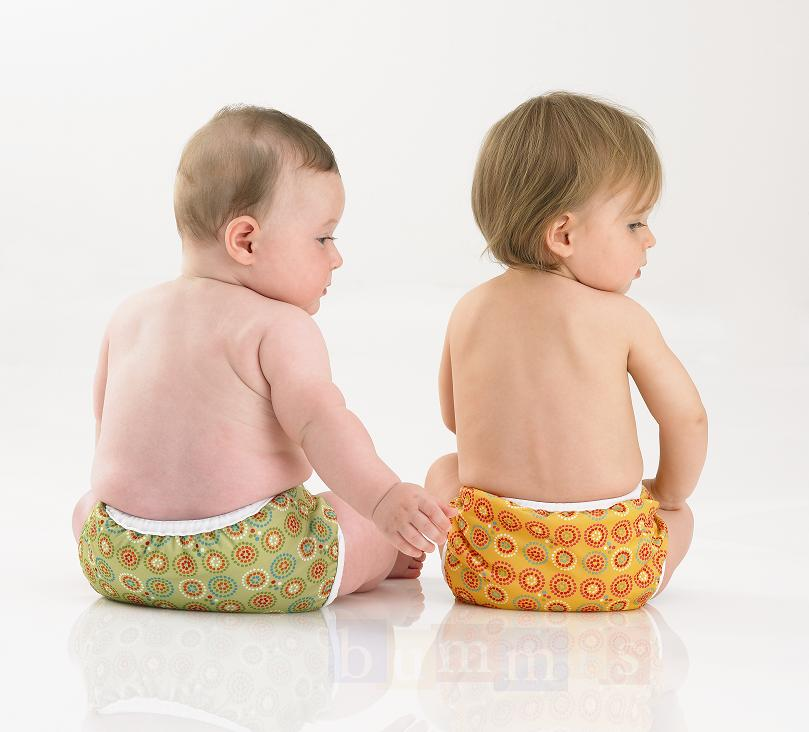Cloth Diaper Fabrics: Organic Cotton
Posted on March 29, 2011
 Today is the second installment in our series looking at the fabrics commonly used in cloth diapering. You can see other posts in this series by clicking here.
Organic Cotton
Cotton is one of the world's most in-demand crops: more than 3% of the world's agricultural land is covered in cotton. That's larger than the entire country of Germany and approximately the size of all of Central America combined. Yet, organic cotton makes up less than 1% of that total.
In order for cotton to be considered "organic," it must be grown with non-genetically modified seed and can use no agrochemicals, such as pesticides, herbicides, fungicides, insecticides, or fertilizers. Considering conventional cotton uses approximately 25% of the world's insecticides and about 10% of the world's pesticides, this is a major departure from conventional farming methods. For every T-shirt or diaper manufactured with conventional cotton, between 1/4 - 1/2 lb. of chemicals have been used. This has obvious ramifications for those with sensitive skin or those just wanting to limit their exposure to chemicals and other toxic materials.
Today is the second installment in our series looking at the fabrics commonly used in cloth diapering. You can see other posts in this series by clicking here.
Organic Cotton
Cotton is one of the world's most in-demand crops: more than 3% of the world's agricultural land is covered in cotton. That's larger than the entire country of Germany and approximately the size of all of Central America combined. Yet, organic cotton makes up less than 1% of that total.
In order for cotton to be considered "organic," it must be grown with non-genetically modified seed and can use no agrochemicals, such as pesticides, herbicides, fungicides, insecticides, or fertilizers. Considering conventional cotton uses approximately 25% of the world's insecticides and about 10% of the world's pesticides, this is a major departure from conventional farming methods. For every T-shirt or diaper manufactured with conventional cotton, between 1/4 - 1/2 lb. of chemicals have been used. This has obvious ramifications for those with sensitive skin or those just wanting to limit their exposure to chemicals and other toxic materials.
 Cotton - regardless of growing method - is a beautiful plant. It grows as a medium size bush, blossoms with delicate flowers, and then produces a ball of cotton as the blossom matures.
Cotton is an especially difficult plant to grow, and even more so when the farmer has chosen to grow organically. Insects are commonly drawn to cotton plants (thus the heavy usage of insecticides in the conventional methods) and an organic farmer must be both creative, persistent, and innovative in their methods in order to have a successful crop. Often "trap crops" are used, as well as soil amendments such as compost are used to encourage biodiversity among the plants, which allow other bugs to "take care of" the unwanted guest pests. Cotton also depletes soil of minerals and nutrients more than it filters back in to the soil, so in an organic system it's an especially important crop to rotate every few years in order to maintain a sustainable operation and profitable harvests.
There are various standards for declaring cotton fabrics to be truly "certified organic," and among the most stringent of those certifications is the European Oeko-Tex 100. Oeko-Tex is unique because it not only tests the cotton in its raw state, but it also tests the product in its final state for more than 100 toxic substances, as dyes and fabric additives can leave toxic residues on the fabric, including heavy metals, phthalates, and phenols. But good news! - nearly all of the cotton diapers offered at New & Green are organic and many of those are Oeko-Tex 100 certified, including Bummis prefolds and the Flip organic cotton insert.
What questions do you have about organic cotton or what have you discovered in your research about cloth diapering? This post is just the beginning - we'd love to hear from you!
Cotton - regardless of growing method - is a beautiful plant. It grows as a medium size bush, blossoms with delicate flowers, and then produces a ball of cotton as the blossom matures.
Cotton is an especially difficult plant to grow, and even more so when the farmer has chosen to grow organically. Insects are commonly drawn to cotton plants (thus the heavy usage of insecticides in the conventional methods) and an organic farmer must be both creative, persistent, and innovative in their methods in order to have a successful crop. Often "trap crops" are used, as well as soil amendments such as compost are used to encourage biodiversity among the plants, which allow other bugs to "take care of" the unwanted guest pests. Cotton also depletes soil of minerals and nutrients more than it filters back in to the soil, so in an organic system it's an especially important crop to rotate every few years in order to maintain a sustainable operation and profitable harvests.
There are various standards for declaring cotton fabrics to be truly "certified organic," and among the most stringent of those certifications is the European Oeko-Tex 100. Oeko-Tex is unique because it not only tests the cotton in its raw state, but it also tests the product in its final state for more than 100 toxic substances, as dyes and fabric additives can leave toxic residues on the fabric, including heavy metals, phthalates, and phenols. But good news! - nearly all of the cotton diapers offered at New & Green are organic and many of those are Oeko-Tex 100 certified, including Bummis prefolds and the Flip organic cotton insert.
What questions do you have about organic cotton or what have you discovered in your research about cloth diapering? This post is just the beginning - we'd love to hear from you!






